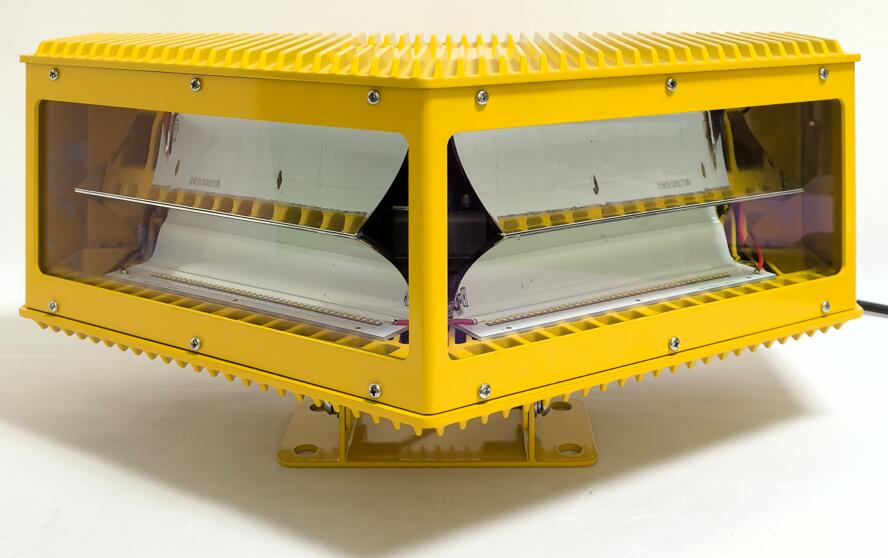The Vital Role of LED Obstruction Lights in Aviation Safety
In the modern world, aviation safety is a top priority, and LED obstruction lights play a crucial role in preventing collisions between aircraft and tall structures. These specialized lights are installed on buildings, towers, wind turbines, and other high-rise structures to ensure visibility, especially during nighttime or adverse weather conditions. With their energy efficiency, durability, and superior performance, LED obstruction lights have become the industry standard for marking hazardous obstacles.
Why LED Obstruction Lights Are Essential
Pilots rely on visual cues to navigate safely, particularly in low-visibility conditions. LED obstruction lights serve as critical warning signals, helping aircraft maintain a safe distance from potential hazards. The International Civil Aviation Organization (ICAO) and the Federal Aviation Administration (FAA) mandate the use of obstruction lighting on structures exceeding certain heights to minimize the risk of accidents.

Unlike traditional incandescent or halogen lights, LED obstruction lights offer several advantages:
Energy Efficiency – LEDs consume significantly less power while providing brighter illumination.
| led obstruction light |
Long Lifespan – With operational lifetimes exceeding 50,000 hours, they reduce maintenance costs.
High Visibility – LEDs produce intense, focused light that can be seen from great distances.
Durability – They are resistant to vibrations, extreme temperatures, and weather conditions.
| led obstruction lights |
Types of LED Obstruction Lights
Different structures require different types of lighting based on their height and location. The main categories include:
1. Low-Intensity LED Obstruction Lights
These are used for structures below 45 meters (148 feet) and emit steady red light. They are commonly installed on buildings, cranes, and telecommunication masts.
2. Medium-Intensity LED Obstruction Lights
Designed for structures between 45 and 150 meters (148–492 feet), these lights can be either steady-burning red or flashing white, depending on regulations.
3. High-Intensity LED Obstruction Lights
For structures exceeding 150 meters (492 feet), high-intensity flashing white lights are required. These are often used on skyscrapers, wind turbines, and broadcast towers to ensure maximum visibility.
Regulatory Standards for LED Obstruction Lights
To maintain uniformity in aviation safety, organizations like ICAO, FAA, and the European Aviation Safety Agency (EASA) have established strict guidelines for obstruction lighting. Key requirements include:
Color Specifications – Red or white, depending on the light intensity and application.
Flash Patterns – Certain structures must have synchronized flashing lights to avoid confusion.
Power Supply Redundancy – Backup systems are mandatory to ensure continuous operation.
Compliance with these standards ensures that LED obstruction lights function reliably, reducing the risk of accidents.
Applications of LED Obstruction Lights
Beyond aviation, these lights are used in various industries:
Wind Energy – Wind turbines are often located in remote areas, making obstruction lighting essential for aircraft.
Telecommunications – Cell towers and broadcast antennas require high-visibility lighting.
Construction – Temporary cranes and tall structures must be marked during construction.
Marine Environments – Offshore oil rigs and lighthouses also utilize obstruction lighting.
Future Trends in LED Obstruction Lighting
As technology advances, LED obstruction lights are becoming smarter and more efficient. Innovations include:
Solar-Powered Systems – Reducing dependency on grid electricity.
Wireless Monitoring – Remote diagnostics for predictive maintenance.
Adaptive Lighting – Adjusting brightness based on ambient conditions to save energy.
LED obstruction lights are indispensable for aviation safety, ensuring that tall structures remain visible to pilots at all times. Their energy efficiency, reliability, and compliance with international standards make them the preferred choice across industries. As technology evolves, these lights will continue to enhance safety while reducing environmental impact. Investing in high-quality LED obstruction lights is not just a regulatory requirement—it’s a commitment to protecting lives and infrastructure.
